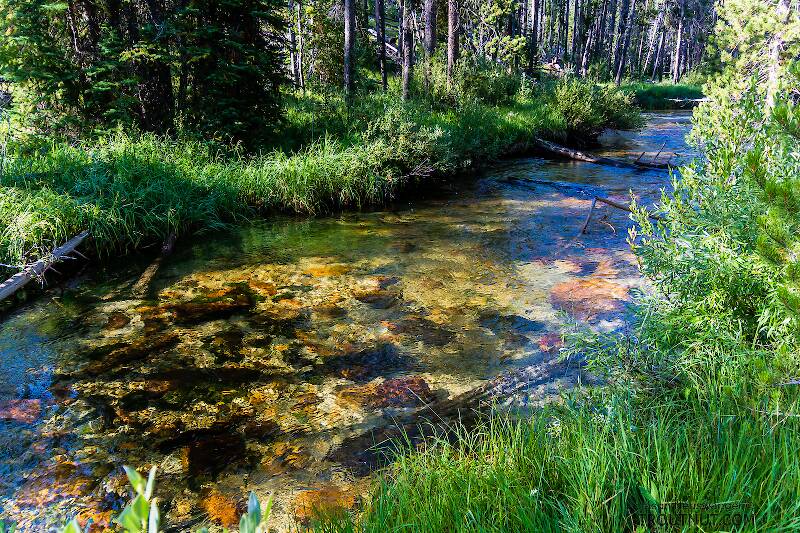
Blue-winged Olives
Baetis
Tiny Baetis mayflies are perhaps the most commonly encountered and imitated by anglers on all American trout streams due to their great abundance, widespread distribution, and trout-friendly emergence habits.


Mayfly Species Baetis intercalaris (BWOs)
Where & when
This species makes its appearance a few weeks after the first brood of Baetis tricaudatus. It is less important because many larger mayflies are on the water at that time. There are good hatches in both the East and the Midwest, and they may make trout selective.In 31 records from GBIF, adults of this species have been collected during June (29%), July (29%), August (23%), October (13%), and September (6%).
In 58 records from GBIF, this species has been collected at elevations ranging from 299 to 9186 ft, with an average (median) of 3182 ft.
Species Range
Nymph biology
Current speed: Any
Substrate: A variety: rocks, gravel, vegetation
Physical description
Most physical descriptions on Troutnut are direct or slightly edited quotes from the original scientific sources describing or updating the species, although there may be errors in copying them to this website. Such descriptions aren't always definitive, because species often turn out to be more variable than the original describers observed. In some cases, only a single specimen was described! However, they are useful starting points.
Male Spinner
Wing length: 5 mm
Abdominal tergites 2-6 of male imago hyaline white; genitalia of the intercalaris type, the tubercle on the inner margin of the first forceps joint well developed.
Turbinate eyes large, lengthily oval, deep brown; upper part of stalk yellow. Face black; inner edge of ocelli, and a spot at base of eye, pale yellow-green. Antennae black, paler at tip; basal joint ringed with yellow at apex. Thorax shiny blackish; lateral margins of mesonotum and the scutellum tinged with dull olivaceous; brown shading on the pleural sutures. Legs dirty white, claws black. Wings hyaline, venation pale. Intercalaries of the fore wing long, those of the first interspace considerably longer than succeeding pairs. Hind wing well developed, at least two times as long as its width. Third vein strong, running rather close to the hind margin, and extending at least to the middle of that margin. Between the 2nd and 3rd veins, two intercalaries are usually present.
Abdominal tergites 2-6 hyaline white; 7-10 umber brown. Sternites whitish, the apical ones opaque. In the spiracular area, the tracheae are lightly marked with black. Tails white. The second forceps joint conical, a tubercle present on the inner apical margin of the first forceps joint (see fig. 164).
Distinguished from Baetis flavistriga by the paler basal abdominal tergites, the large turbinate eyes, and the very long first pair of intercalaries of the fore wing, the latter character also distinguishes it from Baetis phoebus.
Described as B. lasallei
Body length ? mm, wing length 5 mm
Abdominal tergites 2-6 of male imago whitish; genitalia apparently (judging by figure) of the moffati type (now a synonym of Baetis tricaudatus).
Thorax brown, margin of mesonotum more yellow. Legs pale. Wings hyaline, venation pale. Intercalaries of fore wing moderately long. Hind wing large and broad, narrower toward each end, rounded at the tip. Third vein well developed; two long intercalaries between the 2nd and 3rd vein. Costal projection strong, and colored.
Abdominal segments 2-6 pale whitish, with a black dot on each side of each segment. Tergites 7-10 brown, sternites whitish. Tails pale. The second forceps joint rather cylindrical.
Said to be nearest to Baetis phoebus, from which it may be distinguished by the broader hind wing, which is also less pointed at the tip; the genitalia, however, seem not of the same type as phoebus. It is apparently close to pallidulus (now a synonym of Callibaetis pallidus), but the presence of the two intercalaries in the hind wing would seem to distinguish it from that form.
Start a Discussion of Baetis intercalaris
References
- Arbona, Fred Jr. 1989. Mayflies, the Angler, and the Trout. Nick Lyons Books.
- Knopp, Malcolm and Robert Cormier. 1997. Mayflies: An Angler's Study of Trout Water Ephemeroptera . The Lyons Press.
- Leonard, Justin W. and Fannie A. Leonard. 1962. Mayflies of Michigan Trout Streams. Cranbrook Institute of Science.
- Needham, James G., Jay R. Traver, and Yin-Chi Hsu. 1935. The Biology of Mayflies. Comstock Publishing Company, Inc.
Mayfly Species Baetis intercalaris (BWOs)
Species Range
Common Names
Resources
- NatureServe
- Integrated Taxonomic Information System
- Global Biodiversity Information Facility
- Described by McDunnough (1921)

